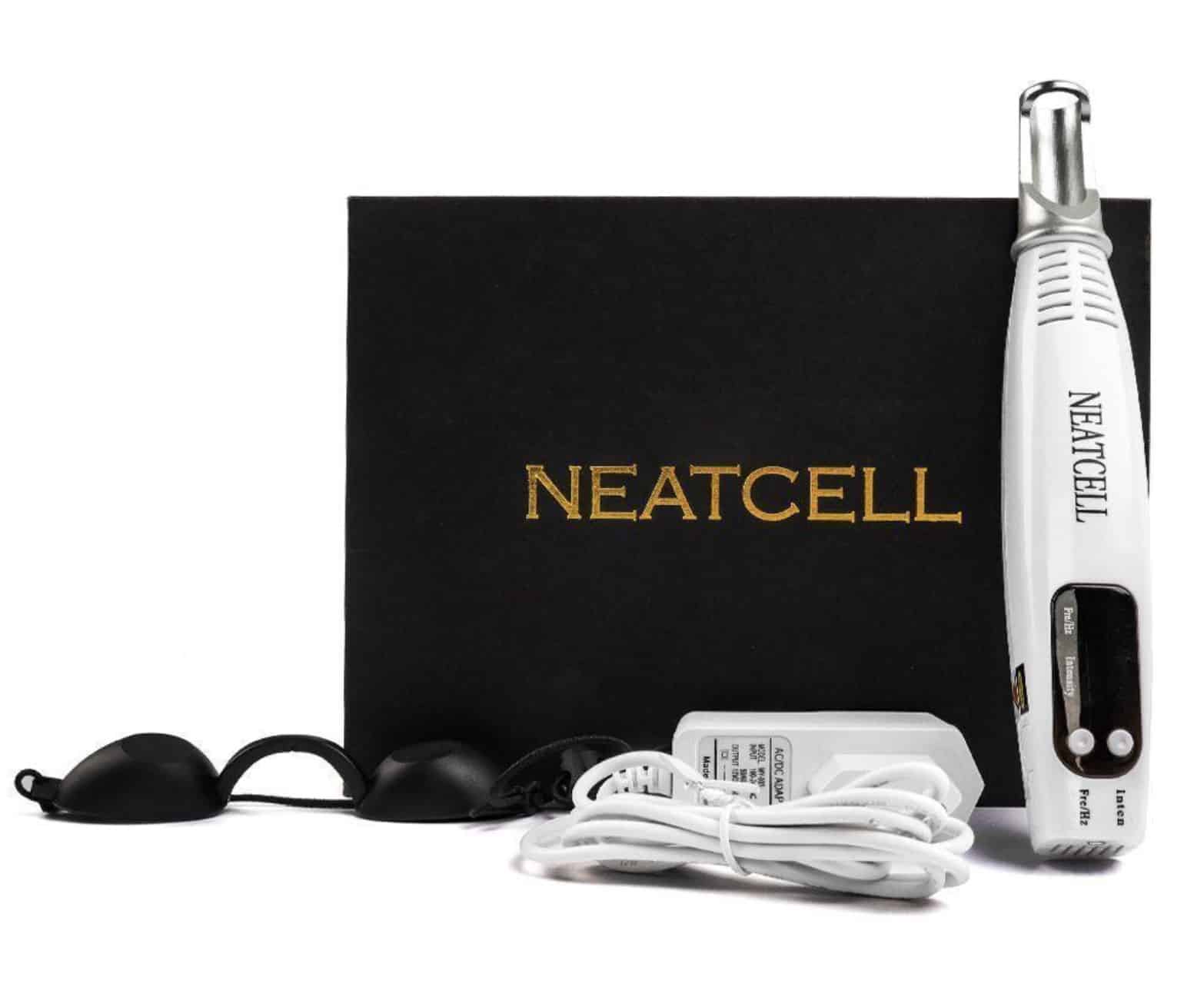As a beauty expert with years of experience testing skin care technology, I have seen the rise and fall of countless gadgets promising dramatic results from the comfort of your own home. When I heard about the NEATCELL Picosecond Laser Pen, I was immediately intrigued by its claims: an affordable, easy-to-use, and effective device for removing tattoos, reducing pigmentation, and rejuvenating the skin – all without the high cost or inconvenience of multiple clinic visits.
After using the NEATCELL pen extensively and thoughtfully over several months, I’m excited to share my in-depth, first-hand experience with you. Here’s everything you need to know about what makes this device stand out.
First Impressions & Getting Started
Unboxing the NEATCELL Picosecond Laser Pen was simple and straightforward. The packaging included the pen itself (I tested the blue light version for colored tattoos, though there’s also a red light version for black ink), a charger, a pair of protective yellow-tinted safety glasses, and a comprehensive instruction manual. The device felt lightweight and ergonomic in my hand, with clear buttons to adjust intensity and frequency settings.
As a safety-conscious beauty professional, I appreciated the clear warnings in the manual – especially about always wearing eye protection and starting at the lowest setting to gauge skin sensitivity. Initial setup took minutes, and after fully charging the device, I was ready to begin.

How Does Picosecond Technology Work?
Unlike traditional lasers that rely on heat, the NEATCELL pen utilizes ultra-short laser pulses — measured in picoseconds (one trillionth of a second) — to precisely target deeper layers of skin pigment or tattoo ink. This rapid pulse “shatters” unwanted pigment into tiny fragments, which are then naturally processed and removed by the body’s lymphatic system.
What’s remarkable is the device’s versatility. Whether you want to fade a regrettable tattoo, address sunspots, lighten freckles, or tackle stubborn age spots, the NEATCELL pen has settings to accommodate a range of concerns. It also claims to stimulate collagen production for overall skin renewal.
Testing on Tattoos & Pigmentation
My first test: an old, faded floral tattoo on my wrist – intricate with various colors that most lasers struggle with. Using the pen at the lowest setting, I worked in short bursts, as recommended by the instructions: no more than 1–2 seconds per area, with 2–3 days of rest between sessions. Each treatment was followed by soothing the area with mild, fragrance-free aloe vera gel.
Within three sessions, I noticed subtle but definite fading of lighter hues in the tattoo. By the fifth session, even the more stubborn pigment began to break apart, and the outer lines softened. What truly surprised me was the device’s precision – it targeted pigment without damaging the surrounding skin or leaving burns, something I often worry about with home devices.
Encouraged by my results, I moved on to a small cluster of sunspots on my cheekbone. Over two weeks of consistent use, these dark spots visibly lightened. Friends and fellow beauty professionals remarked on my brighter complexion and the evenness of my skin tone.
Comfort, Safety, and Downtime
If you’ve ever considered traditional laser treatments, you know pain and downtime often go hand-in-hand. With the NEATCELL Picosecond Laser Pen, my experience was shockingly comfortable. There was a faint tingling sensation and mild warmth with each pulse, but never pain, burning, or prolonged redness. Occasionally, my skin felt slightly sensitive immediately after a session, but this resolved within hours. I never experienced any blistering, scarring, or changes in skin texture.
However, I can’t stress enough the importance of following instructions: always starting low, wearing protective glasses, never over-treating the same spot, and giving your skin time to recover between sessions. Most side effects I read about in user reviews stemmed from improper use or impatience.
Versatility in Skin Care
As my confidence with the NEATCELL device grew, I explored its use on acne scars and even fine lines around my mouth. While my primary goal was tattoo fading, I began to notice a subtle improvement in the smoothness and plumpness of my skin, likely due to the gentle stimulation of collagen and renewal processes triggered by the picosecond pulses. It didn’t replace my entire skin care regimen but complemented it beautifully, making my complexion look brighter and more rejuvenated.
Results, Value, and Final Thoughts
After two months, the progress on my wrist tattoo was significant — far better than I’d ever achieved with topical creams or “tattoo fading” ointments. The stubborn ink was lighter and far less noticeable, while the skin around it remained healthy and smooth. My sunspots were barely visible, and my overall skin texture looked tighter and more even.
From a cost perspective, the NEATCELL Picosecond Laser Pen is a game changer. Professional tattoo treatments often cost hundreds or thousands across several sessions. With this pen, I made a one-time investment that I can use repeatedly, not just for tattoos but for ongoing skin maintenance at home.
Is the NEATCELL Picosecond Laser Pen Worth Buying?
In my professional opinion, absolutely. The NEATCELL Picosecond Laser Pen delivers impressive results for those who follow the instructions, exercise patience, and treat their skin with care. Its effectiveness in fading tattoos, reducing hyperpigmentation, and enhancing skin’s appearance makes it an essential tool for anyone serious about skin renewal but hesitant to invest heavily in clinic visits. The convenience, versatility, and affordability make it a worthy addition to your at-home beauty arsenal.
If you want real results and are willing to commit to consistency (and to treating your skin kindly), the NEATCELL Picosecond Laser Pen is definitely worth buying. I’m genuinely impressed and will continue to use — and recommend — it in my beauty practice.